#subset: keys
Explore tagged Tumblr posts
Text

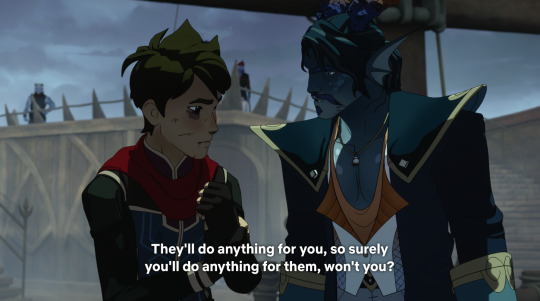
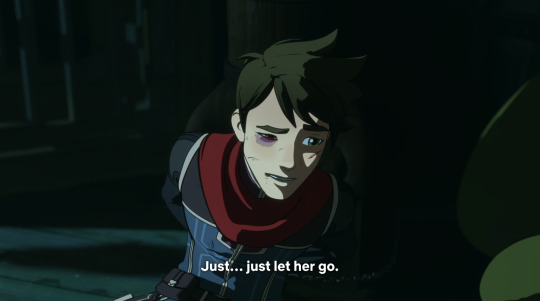

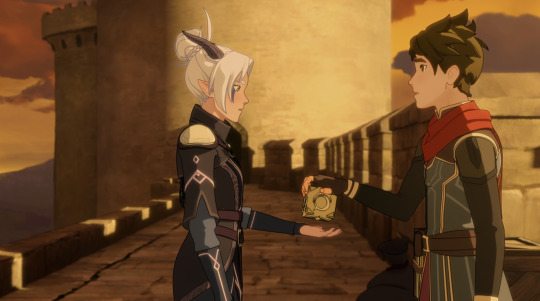
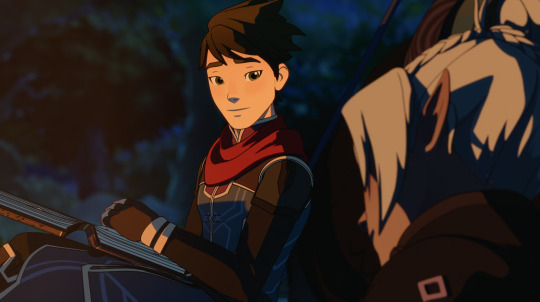
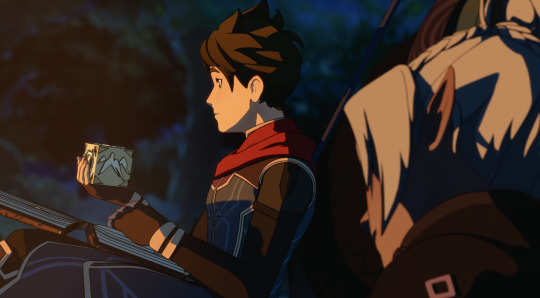
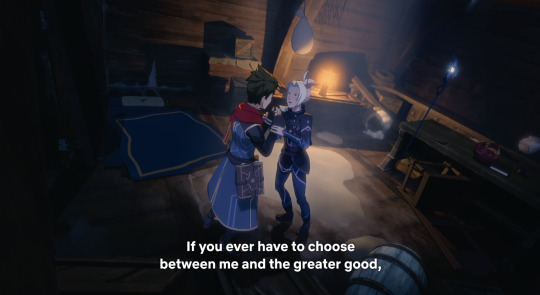
Rayllum + key and freedom associations (part 2)
#rayllum#theme: freedom#mine#subset: imprisonment#subset: keys#arc 2#s6#last one is bc she's holding both his wrists like chains
45 notes
·
View notes
Text
a (possibly naive) part of me feels like society could benefit quite a bit from some kind of cultural exchange between pro bodybuilding and all the variously repackaged pop fitness/ed/bodyposi mindsets that care almost exclusively about weight
#mumbling#maybe they're two ends of some kind of spectrum? maybe? idek man#there's some key similarities#neither philosophy in its purest form is really *healthy* but some subsets sell themselves like they are#there's a lot of preoccupation with appearance and self discipline and food etc#but then some stuff is just night and day
206 notes
·
View notes
Text
During my meeting I wanted to lower the brightness on my laptop because my eyes started hurting. Instead of pressing the brightness button, I pressed the sleep button. I don't think it closed my meeting and I don't think anyone even notice lol Maybe I just froze or something idk
0 notes
Text



my baby swingin’ — simon (ghost) riley

biker!simon (ghost) riley x fem reader
> a bunch of snapshots of simon and his pretty little sweetheart’s adventures.
!! suggestive - minors dni; canon divergence; no chronological order (basically a bunch of loosely-tied worldbuilding); subtle and hinted age difference; reader gets princess treatment because she deserves it so!!
: im the one who’s the most confused as to how my obsession with biker!simon started but im stringing u along anyway so pls have fun!! my inbox is open for brainworms <33

for all posts, pls click on biker!simon tag <33
part 01 - intro post; headcanons
part 02 - simon can’t wait to come home to you
part 03 - getting over your fear of riding a bike
part 04 - lap sitting (a visual); ask
part 05 - simon and your first meeting; ask // extra 01
part 06 - little donuts at the park <;33
part 07 - simon’s instagram account (includes visuals); ask
part 08 - teasin’ each other on their way home; ask; suggestive
part 09 - body worship (a visual); ask; suggestive
part 10 - getting over your fear of riding a bike sequel! (a visual); ask
part 11 - mutual desperation spilling over; smut
part 12 - burning from all these messages; smut
part 13 - scary mask!! (a visual); ask
part 14 - of prince charming and care packages
part 15 - scary ghost? yes. protective ghost? yes <;33; ask
part 16 - safe drive!; ask
part 17 - simon and your first meeting cont.; ask; smut
part 18 - fun times on his bike; ask; smut
-
extra 02 - your nephew’s new favourite adult (a visual); ask
extra 03 - biker!konig makes an appearance!!! (a visual); ask
extra 04 - smack! smack! smack! (a visual); ask
extra 05 - picking up the backpack (a visual); ask
extra 06 - you don’t use it, you lose it; ask
extra 07 - price on a harley; ask
extra 08 - helmet kiss (a visual); ask
extra 09 - ‘girls cum first’ sweater (a visual); ask; smut
extra 10 - tf141 and their shared backpack princess; ask
extra 11 - period cramps and cuddling; ask
extra 12 - of checkpoint videos & dashing men (a visual); ask
extra 13 - no backpacks allowed (a visual); ask
extra 14 - he slipped!! (a visual); ask
extra 15 - her famous luvr; ask (a visual)
extra 16 - keys and kisses; ask
extra 17 - simon announcing his girl (includes visual!); ask
extra 18 - careful now (a visual); ask
extra 19 - they’re friends??
extra 20 - pretty blue lace; ask; smut
extra 21 - dad!simon (a visual); ask
extra 22 - lil smut (a visual); ask
extra 23 - riding on the rain (a visual); ask
extra 24 - girl dad simon; ask
extra 25 - gorgeous and protective (a visual); ask
extra 26 - zip that shit up (a visual); ask | recent!
-
dear john - dbf!simon
↳ for all toxic/dbf simon pls click on dbf!simon tag!!
toxic dad’s best friend biker!simon au; ask; angst + smut
‘dear john’: cont. of toxic dad’s best friend biker!simon au; ask; angst + suggestive
mini cont of dear john; ask
dear john (but it’s john price); ask
dear john (how he fucks); smut
dear john (as illicit affairs); ask; angst + smut
dear john (illicit affairs origin); angst + smut
dear john (illicit affairs origins but as reader); ask; angst + suggestive
dear john (reader moving on); ask | recent!
-
subset 01 - best friend n biker!simon au; ask
subset 02 - best friend n biker!simon au cont.
subset 03 - bimbo!reader

unofficial extra - baker!simon
-
i have a short taglist so pls lmk if you would like to be tagged too ^v^ no more taglist
(updated: 16 march 2024)
#biker!simon#suns.f#suns.hc#simon ghost riley x reader#simon riley x reader#simon ghost x reader#ghost x reader#simon ghost riley#simon riley#suns#masterlist
5K notes
·
View notes
Text
Words Are Unnecessary! A Red Analysis
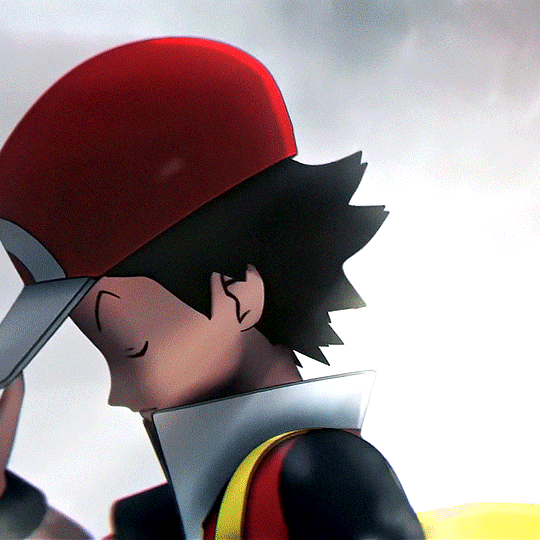
Picture this: You’re a 90s kid, you got a Gameboy and this new game called Pokemon (or as your parents likely called it, Pokeman). And you get one choice of protagonist, a boy from Pallet Town named Red.
Game Red is a silent protagonist turned silent NPC, so one may think it might be hard to do a character analysis on him (compared to say his Origins, Pokespe or Anime counterparts). Yet like much of Kanto, Red is a character told through environmental storytelling.
Let’s start with his name, in all official translations his name is Red. The color Red is a primary color which low key represents his role as the protagonist and the top of the Kanto hierarchy. This is most apparent when you compare Blue’s Japanese name Green which is a secondary color (implying he’s the second best of the Kanto trainers). Symbolically the color red represents passion, love, strength, confidence and importance. As time has moved on and TPCi has made Red an important character just as much as a protagonist, we can see that he embodies so much of the symbolism of his namesake color.
He’s described as having a quiet passion and love for Pokemon. He exudes strength and confidence in any game related adaptation and he’s quite possibly the most important trainer in the series. When you consider the fact that originally, Pokemon Gold/Silver/Crystal were supposed to be the last games in the series you realize that Red’s naming was not just random but meant to be a story of his arc. From your entry into the wonderful world of Pokemon the formidable passionate flame on top of Mt Silver that would serve as your final obstacle.

Alright so let’s take a look at Red’s team. Now canonically we know he completed the Kanto Pokedex of 151 unique little critters. That’s a huge accomplishment that affords him a vast rotation of Pokemon that most trainers in the world will not have. Yet in his NPC appearances we see that he tends to stick to a certain subset of Pokemon and this actually gives a lot of insight into his character
Like most Pokemon champions he opts for a more balanced team with varied typings. I’m going to focus on his HGSS team since that’s the one that is used the most over generations. We see he has a Pikachu, the three Kanto Starters, Lapras and Snorlax. The first thing that stands out is his use of a (very high leveled) Pikachu in a team of otherwise fully evolved Pokemon. This is of course a reference to Pokemon Yellow, but it also just shows his trust in his Pokemon. The fact that he would still keep one of his Pokemon unevolved due to the Pokemon’s own personal preference shows that Red respects the choices of his Pokemon. He even gives his Pikachu a Light Ball to hold in order to boost the powers of his moves, further showing how much he wants to work with his Pokemon to achieve their ultimate potential rather than deciding for them.
The three Kanto Starters are a way to not formally canonize which starter he chooses, but they’re also a reference to Pokemon Yellow as all three can be obtained from gifts. The same goes for his Lapras and Espeon (in GSC) which are also obtained as gifts. Snorlax rounds out the team as the Pokemon he gets by waking up with the Pokeflute (the Pokeflute being a gift). So what does this all mean for Red? It shows that despite having caught the entire Kanto Pokedex (including legendaries and mythicals) he ends up prioritizing the Pokemon he got as gifts. This shows a very sentimental side of him. This makes sense when you consider the guide to Pokemon RBG where it shows he wishes to regain his friendship with Blue back after the latter starts being mean. The Kanto journey for Red is as much of a coming of age story as it is a sentimental one as he really wants his best friend back.

Now taking a look at the moves Red chooses for his team we can see he has a varied amount of attacks that helped to hit most types for super-effective damage. A couple of things to note here is that he does seem to have a preference for moves that give status conditions as a secondary effect showing that he tries to open multiple paths to victory in battle. This shows he is calculating and knowledgeable about the moves he uses. For his HGSS Mount Silver battle you’ll notice the Kanto starters all have the three ultimate moves: Frenzy Plant, Blast Burn, and Hydro Cannon. This once again symbolizes the high degree of love Red has in his Pokemon.
However those moves are much like elemental Hyper Beams in that they require a recharge turn. And indeed Red has Giga Impact on his Snorlax which also requires a recharge turn. Not only that he uses moves like Focus Blast which has not the best accuracy. He also uses moves like Flare Blitz and Volt Tackle which give recoil damage. All this to say, Red has a bit of a reckless streak as well. Which checks when you think about how he single-handedly drove Team Rocket out of Kanto, and his actions during the Pokemas Kanto Villain arc. I do want to point out that he has the move Blizzard on three of his Pokemon which is normally a low accuracy move…except in the Hail. Which, what do you know, Mount Silver has Hail (er snow). This shows that while Red can be reckless he also is very smart in taking advantage of his surroundings.

I’m actually going to jump to his Alola Team because you see aside from levels nothing has really changed except for the moves. Once again he still has some high risk-high reward moves but they’ve been toned down a bit. This actually provides a bit of subtle character growth as we see he’s toning down his reckless streak as he has become an adult. We also see in his moves and items in the battle tree that he varies the strategies he uses against opponents in terms of moves and items used. This is fitting given that this time he’s now known as a Battle Legend. He uses quite a few mega items in the Battle Tree which once again affirm the love and trust he has for his Pokemon.
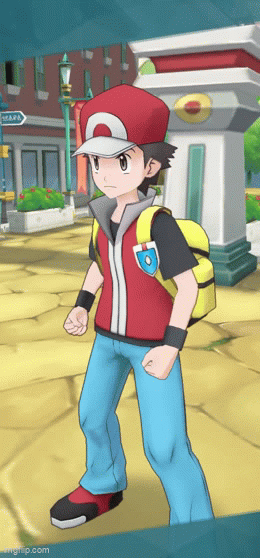
Now let’s take a look at the few quotes we get from Red
"Hi! Do you like Pokémon? Uh no, I just asked you. Huh? You're strange!"
"Hi! Thanks for earlier! Pardon? Is it that fun to mimic my every move?" - Talking to CopycatThis is one of the non-Pokemon Masters spoken words we get out of Red from RBGY/FRLG. Here he’s talking to Copy Cat who is…copying every word he says. It’s a funny bit of dialogue that shows despite being a living legend he was still definitely a kid with brutal honesty by calling CopyCat strange. But we get to see he is a polite child as he thanks CopyCat for the TM he get while also still curious as to why CopyCat seems to enjoy mimicking him.
"…?""…?!" -if Red defeats the player in the Pokemon World Tournament In Pokemon Black 2/White 2 When most of us think of Red, we think of the fact that he typically speaks in ellipses. I really liked this set of ellipses from the Pokemon World Tournament as it’s possible for any character to beat the player without forcing a rematch to progress the story. So that means any of the champions can claim victory. In the case of Victory with Red, here he seems to express a bit of shock that he won against Nate/Rosa. This shows a great deal of humility for him because by the time of the second Unova story events, he’s well regarded as a living battle legend.
"...I accept your challenge!" - To Blue before the Pasio Tournament Finals
This was a very touching moment between Red and Blue. Blue was admittedly rashly challenging Red to a battle due to his own insecurities about being a good rival to Red especially given the Pasio format of three on three battles. Normally when Red accepts challenges he does so silently, but here we see him make a verbal acceptance. This is huge because it shows how important Blue is to him. He recognizes Blue still struggles with insecurity in regards to the rivalry and rather than just wordlessly accept a battle, he tells Blue he accepts to show that he acknowledges Blue not just as his best friend, but as his rival. Even when he’s challenged by champions like Leon and Cynthia he is wordless, but with Blue he speaks to affirm the challenge. It speaks volumes about how much Red cares about Blue. Again going back to the RBGY guide book that talks about how Red wants to get his friend back, you can see how Red doesn’t want to lose Blue as a friend again and is willing to verbally affirm Blue, because he recognizes that words of affirmation are a love language to Blue.
"(Blue, Leaf...Let's win this—together!)" - in his head Okay so he didn’t actually speak this out loud but this counts. As they’re preparing for the finals of the Pasio Tournament, you see once again how much Red values his two childhood friends. He doesn’t just want this to be “The Red Show” where he, the living legend, effortlessly takes down the opponents and with all of the glory going to himself. He wants to win it with the help of his friends. This once again shows how sentimental Red is as a person
"Congratulations! You won!"
This is also major in one of the few times he speaks after losing, but also in front of a large audience. Him verbally congratulating Scottie/Bettie and their team for their win shows a high degree of respect that he has for the rookie trainer to be able to lead a team to victory against him and his closest friends. Considering that (despite what team you use against him) the cutscene shows Rosa, Misty and Brock this is also a way of him showing major respect to the first two gym leaders he ever took on when he began his journey in Kanto years ago.
"... ... ... ... ... ... Words are unnecessary!"
I remember seeing this “A Day with Sygna Suit Red” the first time and absolutely dying of laughter when these words were uttered. Red was absolutely trolling Flint and Scottie/Bettie at the moment knowing very few would believe them if they said they heard Red speak. It’s nice to see a more playful side of him that also shows why he, Blue and Leaf all get along so well. They’re all little shits.
Alright I’m going to add a few more quotes from some other characters to give a bit more context to Red’s character
"Red is never satisfied with how strong he is. He's always looking for new ways to grow as a Trainer and bring out the potential of his Pokémon." - Professor Oak
With this quote from Professor Oak, we can see once again how despite how strong Red is he never lets it get to his head. He’s always constantly seeking improvement."With Red, what really stood out to me wasn't that he was strong but that he seemed very gifted as a Trainer." - Brock
Even though it may seem like to some that Red is portrayed as having always been this ultra strong trainer, Brock’s words here show that he had to grow into his strength. Yes he may have had a bit of a knack of battling, but those early victories weren’t flawless. He’s still fallible
"Well, don't go overboard with the tough love, Red." - Blue
To be honest, it was hard to choose a quote from Blue, since he won’t shut up about Red. But I really liked this one from the Neo Champion event. It gives some more fallibility to Red as he doles out tough love to his mentees and Blue cautions him about not overdoing it. "Winning makes you two happier than anyone, while losing makes you the most frustrated. You're both unbelievably straightforward and earnest when it comes to Pokemon" - Blue, again And more quotes from Blue! Here we see him talking to Leon and comparing the two showing how similar they are on a core level. This comparison highlights Red having a straightforward philosophy when it comes to how he interacts with Pokemon and how he deals with battling. It's simple but as we can see from his results it's been very effective in catapulting to the sheer ability and strength he has.
“He’s been battling nonstop, even cutting back on sleep” - Elio That tough love he dealt to his mentees during the Neo Champion event also extends to himself as he pushes himself extremely hard after his close win against Leon in the Arc-Suit story. This tracks with him disappearing for years on Mount Silver to train after becoming the Kanto Champion. This highlights his drive to improve but also his reckless streak. It also shows just how much he respects Leon’s strength as he’s pushed Red to a limit he’s not used to being pushed to. It's also telling that he picks the three trainers (Elio, Rosa and Ethan) who in the mainline games are shown to be able to defeat his team. Once again highlighting Red's continuous strides for improvement.
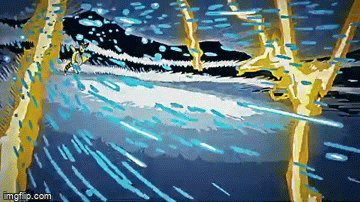
Red throughout the years has been a powerful icon of the franchise and is in many ways a symbol for how as the generations pass, GameFreak continues to find new ways to explore the potential of the world of Pokemon. He’s a quiet flame filled with endless passion and a bit of recklessness. But above all he’s filled with love, love for Pokemon, the human friends he’s close to and the thrill of battle.
346 notes
·
View notes
Text
Reporting from multiple outlets suggests that Trump and his Middle East envoy, Steve Witkoff, played a decisive role in forcing Israeli prime minister Benjamin Netanyahu’s hand. In a January 7 press conference from Mar-a-Lago, Trump warned that “all hell will break out” if a hostage deal wasn’t reached before his inauguration. “It wasn’t a warning to Hamas. It was a warning to Netanyahu,” Steve Bannon told Politico, which also quoted former Israeli prime minister Ehud Olmert as saying Netanyahu agreed to the deal “because he’s afraid of Trump.” “The prime minister was dragged into this deal against his will and was unable to resist. He understood the consequences of disappointing Trump even before he reached the White House,” a Netanyahu associate told Al-Monitor, which also cited a former top Israeli official who said, “Netanyahu knows that with Trump he will not be able to wipe the floor as he did with Democratic presidents—like Clinton, Obama and Biden.” Witkoff reportedly told the Israeli prime minister to his face: “Don’t fuck this up.” And Netanyahu has already paid a political price: this past weekend, Israel’s settler-extremist national security minister Itamar Ben-Gvir resigned from Netanyahu’s shaky far-right governing coalition over the ceasefire deal, after standing with Netanyahu for fifteen months of genocidal warfare backed by the Biden administration.
[...]
In the same week that the ceasefire deal was tentatively announced, two other stories broke that spotlighted the extent of Biden’s moral and political failure in Palestine. One was The Lancet’s publication, subsequently covered in the New York Times, of a peer-reviewed study of traumatic injury deaths in the Gaza Strip from October 7, 2023 through June 30, 2024. The study estimated that the Palestinian Ministry of Health underreported such deaths by 41 percent during that period, and that over 64,000 Palestinians, many of them women and children, had died from traumatic injury, a figure that does not include the untold thousands more who died of starvation or disease resulting from Israel’s bombardment of Gaza’s infrastructure (a previous analysis published by The Lancet estimated total Palestinian deaths to that point at over 186,000). Another six months of nonstop devastation in Gaza have passed since the data for The Lancet study was collected. The exact casualty numbers may never be known and in a sense are irrelevant, as no one seriously doubts that Israel has inflicted indiscriminate collective punishment against a captive civilian population, in what has been declared a genocide by Amnesty International, Human Rights Watch, and multiple world-renowned genocide experts (including some initial skeptics), and ruled at least “plausibly” genocidal by the International Court of Justice. The other story that broke last week was an Institute for Middle East Understanding poll that made the most plausible case to date that Biden’s handling of Gaza might have cost Harris the election. Unlike most polls, which focus on what voters overall in 2024 prioritized in the presidential race—typically, economic issues like inflation—the IMEU poll focuses on the millions of Biden 2020 voters who opted for a candidate other than Harris in 2024, whether that meant Trump or a third-party candidate. Among this subset of the electorate, a 29 percent plurality named “ending Israel’s violence in Gaza” as the most important issue in deciding their vote, with even higher percentages in the key battleground states of Arizona, Michigan, and Wisconsin. While no single factor can account for Harris’s shutout in all seven battleground states or Trump’s popular vote win, the IMEU poll provides strong evidence for what seemed anecdotally obvious throughout last year: the Biden-Harris team’s unapologetic support for Israel’s genocide alienated meaningful numbers of potential supporters.
21 January 2025
310 notes
·
View notes
Text
60s/70s Medieval Revival


look 1: hair, dress, diadem, belt, accessory top, tights
look 2: hair, dress
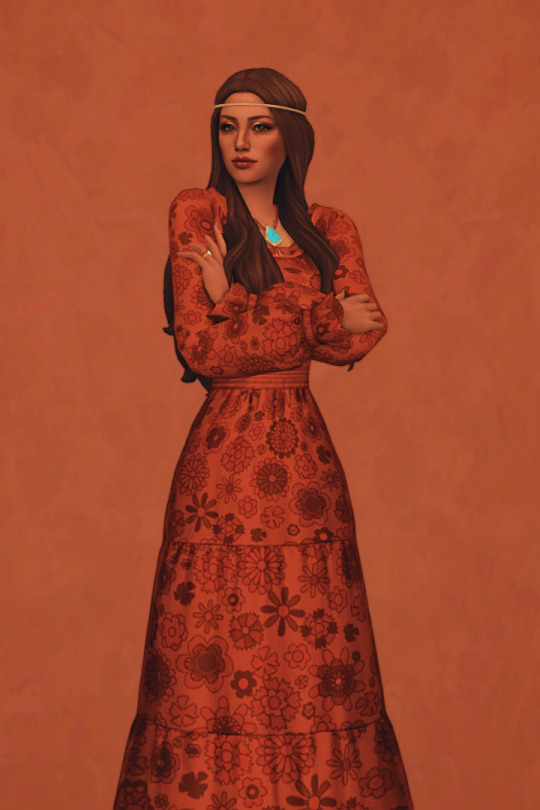
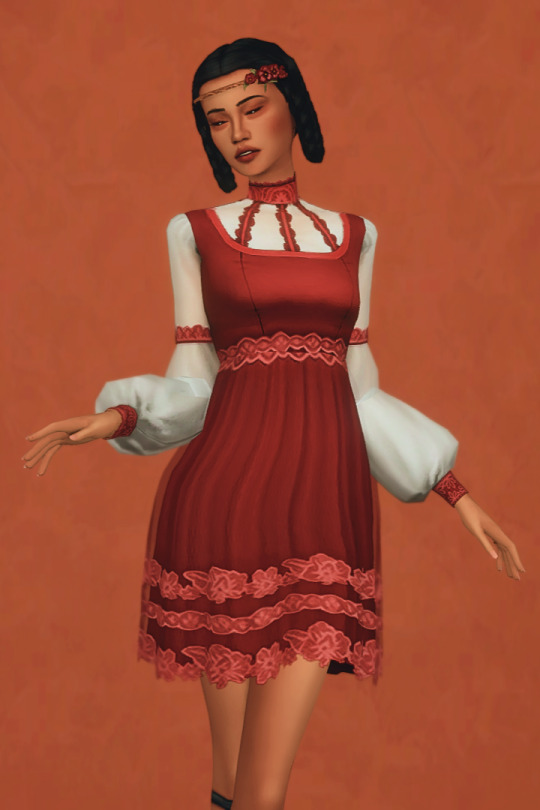
look 3: hair, dress
look 4: hair, dress, headband
The medieval fashion revival of the sixties, occurred as a subset of the psychedelic and hippie subculture styles. The trend was popular amongst 60s folk musicians and most famously epitomised by Brian Jones of The Rolling Stones. Medieval revival (as the name suggests) borrowed heavily from the medieval renaissance and incorporated elements of 60s psychedelia 🍄 Rich velvets and brocades were key fabrics along with classic renaissance shapes and cuts such as leg of mutton and exaggerated bell sleeves.
-tveye_vintage (instagram)
thanks to all the wonderful cc creators!
@daylifesims @ilkup @flowermilksims @laeska @simstrouble @vroshii
@trillyke @sentate @sychik @surely-sims @simverses
#tried my best at creating an accurate -ish medieval revival lookbook#I guess I really tend to gravitate towards a certain color palette...#ts4#ts4 historical#sims 4 cc showcase#sims 4 decades challenge#sims 4 screenshots#sims 4 lookbook#simblr#sims 4 70s#sims 4 mid century#sims 4 60s#sims 4 medieval revival#sims 4 maxis match#sims 4 maxis cc#my sims#show us your sims#sims 4#sims 4 cc#sims 4 historical
160 notes
·
View notes
Text
Writing Notes: Noir Fiction

Noir fiction - a subset of the broader crime fiction genre.
Noir stories typically feature gritty urban settings, morally compromised protagonists, dark mysteries, and a bleak outlook on human nature.
Noir books and films noir frequently take the form of detective fiction (sometimes called hardboiled fiction), where the protagonists often work as private eyes or police detectives.
Whether or not they specifically concern detective work, works of noir fiction are fundamentally crime novels, short stories, and films.
The central action revolves around crimes that often contribute to the downfall of the protagonist or other sympathetic characters.
Common Characteristics of Noir Fiction
The noir genre, as practiced by literary authors and Hollywood screenwriters, often revolves around four key characteristics.
Enduring mystery: Nearly all noir novels are mystery stories. Protagonists struggle to track down the perpetrators of crimes, and this struggle often leads to their own personal peril. In many cases, these protagonists are detectives—as in the work of Raymond Chandler and Dashiell Hammett—but this is not a requirement of noir.
A femme fatale: Classic noir often features a femme fatale, a mysterious and seductive woman who uses her sex appeal to seduce and entrap her enemies.
Gritty urban settings: Like many works of mystery fiction, noir fiction slots nicely into the urban landscapes of twentieth-century America. West coast cities like Los Angeles and San Francisco are favorites of noir novelists, as is New York City.
Grim assessments of human nature: Although pulpy and driven by action and intrigue, many noir books are works of literary fiction that make statements on the human condition. In a great number of cases, those statements are bleak. From the villains to the protagonists to society itself, the world seems to conspire against good people in noir fiction.
Tips for Noir Fiction Writers
Consider your take on human despair. The characters in noir stories lead bleak lives. Their needs are rarely fulfilled and they often engage in self-destructive behavior. If you want to write in the noir subgenre, consider how you might interpret common themes of desperation and futility.
Create characters with major flaws. Whether by fate or by random circumstance, most noir protagonists end up leading themselves into more danger or disgrace as the story unfolds. Consider how you might create characters with fundamental flaws—addiction, greed, lust, vanity, naiveté—that might propel them into unfortunate situations.
Explore unique settings for your noir story. “Noir” is the French word for "black," but not all noir fiction occurs in the dark of night or the shadowy corners of a major city. You can set your noir story wherever you like so long as it embodies that essential grim outlook.
Examples of Noir Fiction
The Maltese Falcon by Dashiell Hammett (1930): This novel introduced the iconic hardboiled detective Sam Spade, who follows a trail of crimes involving a seemingly priceless statuette of a falcon. The mood is ever bleak and morality plays little role. The book was later adapted into a blockbuster film directed by John Huston and starring Humphrey Bogart.
The Big Sleep by Raymond Chandler (1939): Another hardboiled detective classic, The Big Sleep is set in Los Angeles. Chandler's detective Philip Marlowe takes on a blackmail case that nearly leads to his own demise. A World War II-era film adaptation, again starring Humphrey Bogart, led to box office success. Nearly sixty years after the book was published, the story received an amusing twist when it became the rough outline for the Coen Brothers' comedy noir The Big Lebowski.
Strangers on a Train by Patricia Highsmith (1950): Highsmith's debut novel inspired a famous Alfred Hitchcock film of the same name. True to its title, it involves two strangers who meet on a train and agree to "trade murders" so that each can be rid of someone in their lives with no suspected motive.
The Postman Always Rings Twice by James M. Cain (1934): Cain's noir story, which draws heavily from Emile Zola's 1868 novel Thérèse Raquin, focuses on a drifter named Frank with sociopathic tendencies. It involves a strange form of romance, but also shocking plot points that led to book bannings after its publication.
Queenpin by Megan Abbott (2007): A touchstone of contemporary noir fiction, Queenpin is actually a throwback to the golden age of the mafia, where illicit gambling ruled the day. Queenpin focuses on a ruthless mob veteran named Gloria and an unnamed young woman protagonist.
The Black Dahlia by James Ellroy (1987): The Black Dahlia is a contemporary noir novel that looks back in time for its subject matter. Revisiting the 1947 "black dahlia" murder in Los Angeles, protagonist Dwight "Bucky" Bleichert makes the ill-fated decision to join the LAPD and things go downhill from there. The Black Dahlia is the first in Ellroy's "L.A. Quartet," a series of neo-noir books where corruption reigns, human nature fails, and happy endings are in short supply.
They Shoot Horses, Don't They? by Horace McCoy (1935): Horace McCoy's noir novel is a testament to broken Hollywood dreams, infidelity, rejection, and painful quests for glory. While it involves crime, it largely steers clear of police and detectives. It heaps all the misery of a painful noir premise onto its everyman protagonist Robert and his companion Gloria.
Source ⚜ More: Notes & References ⚜ Writing Resources PDFs
#noir fiction#writeblr#literature#genre#writers on tumblr#writing reference#dark academia#spilled ink#writing prompt#creative writing#writing inspiration#writing tips#writing ideas#writing advice#writing resources
110 notes
·
View notes
Text

NO I WAS THINKING THE SAME THING EARLIER TOO GO OFF
taps mic
tenshi kaiwai mind
steps off the podium and leaves, never to be seen again
#red jirai kei soul would go crazy..#also a stretch but maybe decora soul? there’s probably a subset of decora that has some darker colors
44 notes
·
View notes
Text
It's a common misconception in the amateur Linux/Unix world that "Control C", AKA "intr" or "interrupt" (not to be confused with the CPU concept of an interrupt) is a keyboard shortcut. It isn't, really. Not ostensibly.
This all goes way back the very very early days of ASCII, when it was both a character set and a communications protocol. (Remember that the "II" stands for "Information Interchange".)]
ASCII defines a series of seven-bit codes, each of which has some fixed meaning. For the "printable" subset of these codes, we commonly describe this relationship as though a given code 'means' some character; but from the communications protocol point of view it's more like they 'mean' to print some character. i.e. 61h doesn't just mean 'a', it means "print 'a' and advance the cursor".
Actually, "cursor" is the wrong word to use here. We think of ASCII as something computers and only computers use, but this wasn't the case in the early days. ASCII is a telegraph code. Helpful for computers, yes, but built from the ground up to allow operators to control typewriters (teletypewriters, AKA TTYs) from across the world over the telegraph network.
That's why there are more than just printing codes. These are the "non-printing" or "control" codes, designed to control the typewriter on the other end. You're probably familiar with some of them: 20h, AKA "Space", which advances the type head but prints nothing; 0Dh, AKA "Carriage Return", which puts the type head back the start of the line; 0Ah, AKA "Line Feed", which advances the paper one line; and 09h, AKA "Tab", which advances the type head some configurable amount.
Some of them you're probably less familiar with. 07h is "Bell". It rings a bell on the receiving end, perhaps to wake them up and let 'em know a message is coming. There's 06h and 15h, Acknowledge and Negative Acknowledge. There's 01h, 02, 03h and 04 -- Start of Heading, Start of Text, End of Text, and End of Transmission. There are codes to turn on and off the receiver's peripherals like a tape punch recorder or reader. There are codes to delimit files and records. There's a backspace code! Everything you could want as a telegrapher in 1963.
We run into a problem when trying to type these control codes, though. By definition they don't really print anything, so what are we gonna put on the keys? Furthermore, there are a lot of control codes. Even if we figure out what should be on the keys it'll double the size of our typewriters to include them all! (I mean we can do it for some of 'em, like "Space" which already has a key, but "BEL"? "ACK"? "X-ON"?)
Fortunately, there's an existing solution to this kind of problem. Here's a picture of the keyboard of a Teletype Model 33, one of the first products to use ASCII, and it shows this solution:

See that "CTRL" key? Forget how you think it works.
Y'know how when you press "shift" on an old mechanical typewriter, it physically "shifts" the type basket down so you can use capital letters and punctuation marks? Like, shift-g isn't a "keyboard shortcut" for 'G" so much as "how you type 'G'". It selects between map layers, makes it so you don't need to have two keys for every letter.
Control does the same thing. Control-g is not a "keyboard shortcut" for ringing the bell, it's how you type "ring the bell".* Control-f is how you type "Acknowledge", control-s is how you type "turn off the tape reader", and so on and so on. All in the same way that shift-4 is how you type '$', and w is how you type 'w'.
So what's control-c? ^C is "End of Text". That's why it's used to end processes, alongside counterpart ^D "End of Transmission". You're not telling Linux you pressed "'control' and 'c'", you're telling you pressed "End of Text", and it knows "End of Text" means "end this process".†
If you take a look at the stty tool, you'll find that you can rebind some of these default actions. Maybe you want ^Y to be your interrupt instead of ^C. You can do that! Run stty intr ^Y in a terminal it'll do it. But you can't bind, say, control-9, because that's not a control character. Or control-., or control-page down, or "enter" on the numpad. The Linux line discipline has no idea what those are. It deals in characters, not keys.‡
That's why ^C isn't a keyboard shortcut.
*You'll commonly see these control characters transcribed with so-called "caret notation", where BEL is ^G, ACK is ^F, etc. The ^ means control, the letter indicates what key you'd press to type it.
†That's not to say that Linux interprets every control character like the spec says. ^W ("End of Transmission Block"), for example, is used for "word erase". Presumably because it starts with the letter 'w'. Under the hood it's still interpreting the keys you pressed as "End of Transmission Block", though.
‡You might wonder how the arrow keys work, then. You can think of them like macros. "Up" for example will type "^[[A" -- that's three characters, '^[' AKA "Escape", '[' AKA "Left Square Bracket", and 'A' AKA "Latin Capital Letter A". "Down" is "^[[B", "Right" is "^[[C", and "Left" is "^[[D". These work...sorta like printf formatting strings. '^[' tells Linux that next couple characters contain control information and not their usual meanings. Read more about this here.
103 notes
·
View notes
Text
So I was thinking about the infamous
Seems to me that love's got a tighter grip on you than those chains around your wrists, so I'll do you a favour and set you free.
cut lines from "Finnegrin's Wake." And I've said before that I totally get and agree with why these lines got cut, because they just verbalize a dichotomy that is (hopefully) obvious to the audience anyway, i.e. giving Callum the choice to
'Be freed' by losing Rayla OR remained 'chained' by refusing to lose her
Obviously this isn't literal because 'being freed' means staying in his chains, and 'staying chained' means removing his chains. However, it is somewhat true from an emotional and a thematic standpoint. Callum knows what he's risking in giving Finnegrin the spell, and he knows what he's risking — playing into Aaravos' hands in ways he can't quite understand, but is deeply afraid of — in doing dark magic to get out of his chains. It's been theorized for years now by many people that Callum's desire to protect and help his loved ones is going to be what leads him into doing Aaravos' bidding / possessed again.
We also have good reason to believe that, ultimately, Finnegrin is going to be wrong. There's solid evidence that Rayla is going to be what helps Callum break free of Aaravos' control, and this line is a pretty pointed indicator. Callum's love for her is stronger than his current, literal entrapment. That can very easily take a positive turn and I expect that it will in coming scenes.
But I want to point out something that's like... specific and obvious and yet overlooked (myself included) about this line.
If Rayla being there can keep Callum chained down, and removing her can free (unlock him), then Finnegrin is stating that Rayla is the Key to Callum. She's his Key, capable of both locking and unlocking. And this makes perfect sense, given all the duality she represents for him ("Now you're back, and that's kind of good, and it's kind of bad" / "So they might kill you or they might save you?" / light vs dark with light not always being good).
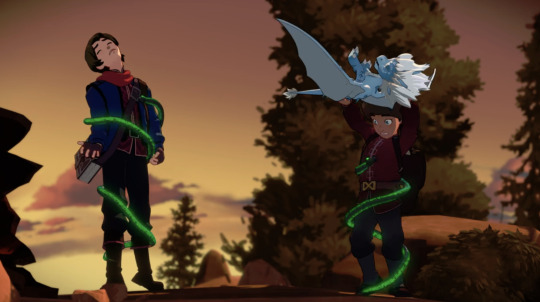
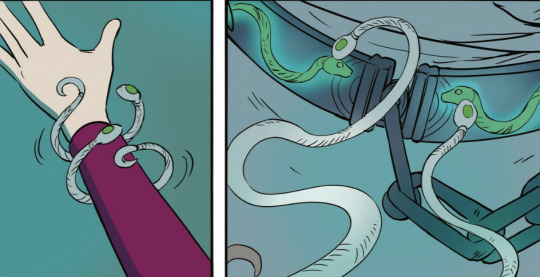
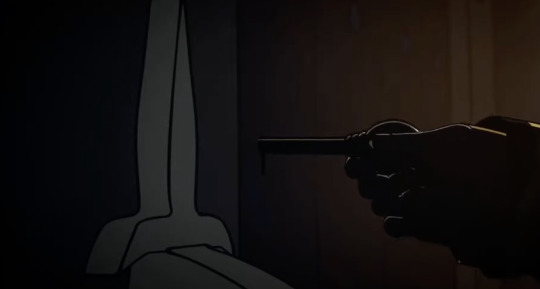
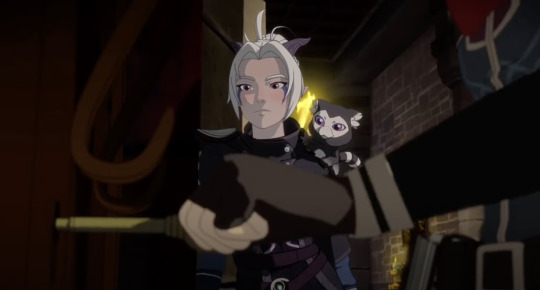

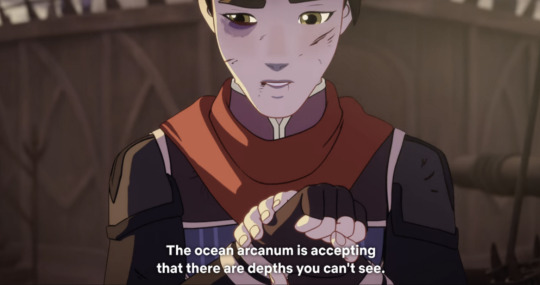
We see this more literally in 5x08 itself with Callum's love for her being his motivation to do dark magic (locking himself) and being part of his motivation / ability to understand the Ocean arcanum (unlocking himself from Finnegrin's hold, literally). You can read more about that here if you'd like.
It also bodes well for the theory that the Key of Aaravos is his chest piece and has something to do with getting him out of his prison, because it was involved in locking him away (and therefore, can be involved in unlocking whatever led to him being put in there):
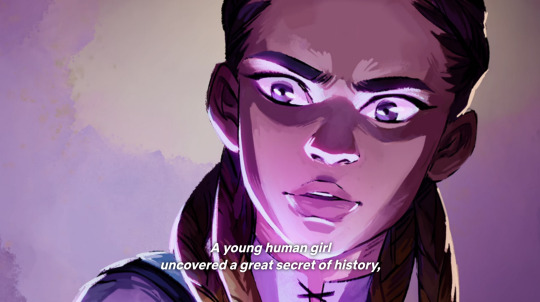
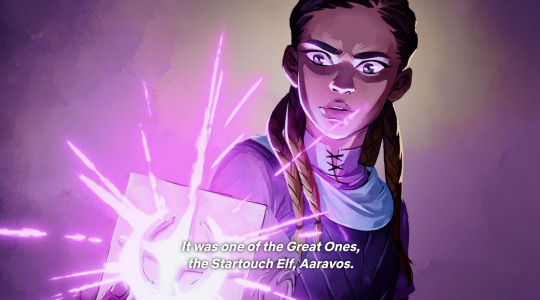
and that its presence in Callum's life is at its most pronounced when Rayla comes back, because — just as the Key of Aaravos is the key to Aaravos, she is the key to Callum.
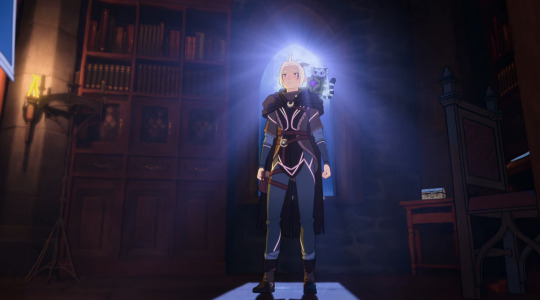
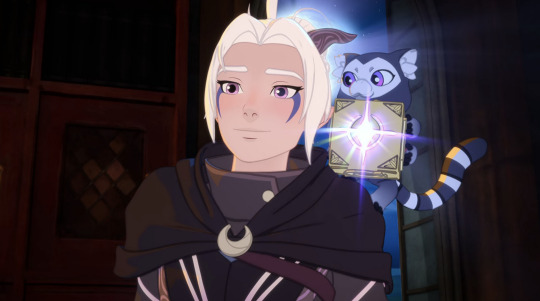
#the dragon prince#tdp#key to his heart theory#theme: duality#theme: freedom#subset: keys#rayllum#devil and the lovers#parallels#mine#s6 speculation#predictions#cube hostage exchange theory#adjacently if nothing else#5x08#arc 2#yeah i feel good about this#analysis series#analysis#it's about the Framing
96 notes
·
View notes
Text
SPIRITS OF THE HIGHLANDS: A POST

Depiction of a dragon in regional animal-style (simplified visual motifs that impart and communicate key attributes of animals), as used in decoration or tattooing.
The term ‘spirit’ in the Hill Tribes cultural sphere is a very broad category that includes souls of the dead, supernatural entities, and some legendary creatures, but does not include gods (entities that were involved in the act of creation). The boundaries between spirits and gods can be ambiguous sometimes- a select few spirits are venerated in similar capacities to gods and/or are reckoned as similarly powerful, and some gods are instead considered spirits in certain traditions. The commonalities among all are that they are ascribed sapience and some degree of magical ability, and/or are souls of the dead.
Spirits are understood to be a material aspect of reality, mostly existing in physical bodies (though some are disembodied). The notion of a ‘spirit world’ and a ‘human world’ is usually differentiated, but not in the sense that they are physically discrete planes of existence, rather that they are separate modes of living and different parts of the same landscape- the human world exists in the villages, farmland, and well-established roads, and the spirit world exists in 'wilderness', and in places that are wholly inaccessible (the sky, mountaintops, deep underwater etc). People enter the spirit world as part of routine movements of life (herders moving up to high summer pastures are within the spirit world) but it is regarded as unfit for permanent occupation.
Spirits are loosely differentiated into the categories of granul ('wild spirits', entities that live in wilderness) and daigh (souls of dead humans and animals). An additional subset of granul are '-folk', regarded as a type of person in similar capacities to qilik being 'birdfolk' and elowey being 'dogfolk', but living specifically as magical aspects of nature.
All spirits are regarded as individuals and many are known by name (either as key folkloric figures, or with the names of local spirits discerned through the divination of witches). Their natures range from benevolent to mischievous to malevolent to deadly, with some having the capacity for all these at once. The vast majority are not venerated (only ancestors receive this treatment in full), just accepted as aspects of reality that one must know how to engage with.
Spirits are assumed to exist throughout the world in great number and variety, it is just those of the Highlands who are best known and most important to the Hill Tribes. Most people will very readily adopt other spirits (and some foreign gods) into their worldview without this being an act of religious conversion or other such cultural paradigm shift, instead simply assuming these entities to be the unfamiliar local spirits of foreign places.
---
Wildfolk: Humanlike spirits of the forests and mountains, associated with deer. These are tricky, sometimes malicious, and easily offended entities that must be dealt with respect and care. They mostly take the form of deer during the day and shapeshift into small, pale, long-bearded and wild-haired humans at night. They exist in a parallel society as deer herders, and are led by very powerful witches who can physically shapeshift into birds. The wildfolk witch Bernike is the most famous and has a prominent place as a major character in folklore, regularly interacting with gods and heroes and regarded as a (somewhat capricious) protective spirit of the Highlands.
Riverfolk: Humanlike river spirits, generally not as dangerous as wildfolk. They travel along rivers in canoes and will often rest and sunbathe along the shore, but are often very shy of people and will usually take the forms of trout to flee when spotted. They sometimes appear in folktales as seducers, or as brides/grooms (after being caught by fishermen in trout form). Said to once have had entire kingdoms to the southwest of the Highlands, but these were conquered by the Burri. (This aspect is partly a cultural memory of early Wardi tribes that lived in the lands now called Ephennos, most likely the eponymous Ephenni or a related group absorbed by them).
Seafolk: Humanlike sea spirits. The Highlands are fully landlocked (the far north of the region is fairly close to the coast of the Viper, but not enough for people to venture that far on any regular basis) and these mostly are just assumed to exist without being regularly encountered. They appear in myths in the migration and settlement cycles, described as being encountered by the ancestors of the Hill Tribes as they crossed the sea. They are described as akin to riverfolk, but more aggressive.
Dainhrudinnas: Spirits with the bodies of humans and the heads of dogs, who are excellent swimmers and are the spirits of lakes (dainhrudinnas having meaning akin to 'lake dogs', with the word for 'lake' translating dead literally as 'great river valley'). These are said to only live in far away places (usually regarded as being across the sea to the north, or somewhere vaguely 'east' or 'south' inland), but make semi frequent appearances in stories about distant lands. They may be partly rooted in cultural memories of various elowey peoples that were encountered by the pre-migratory ancestors of the Hill Tribes, and/or a loose conceptualization of the Jazait people based in secondhand knowledge. They are regarded as akin to elowey but not the same thing (in a similar capacity to wildfolk, riverfolk, and oceanfolk being akin to humans).
Kulsigranul: Minor wild spirits, mostly associated with barley. They are usually described as tiny (1 ft tall) humans who usually live alone in the wild, but convene in barley fields on nights of the full moon to engage in drunken revelry. They are also known to steal milk from the teats of cattle and horses, which is regarded as an intoxicant for them. Their presence is beneficial to the crops (though not to livestock), and cups of milk can be left out to attract them into fields. They hate being seen by humans and can cause bad luck or the withering of crops if their festivities are interrupted. On full moons, one should generally avoid entering barley fields and never follow sounds of distant music.
Virgranul: a malicious spirit with no body of its own, perpetually seeking to inhabit human flesh. It can enter the body only at moments of transition- during conception, or at the very moment of death. Virgranul possession at birth causes a person to become a witch, virganul possession at death results in the corpse wandering off and living as undead until it becomes too rotten to hold its shape (a dangerous situation for the original soul, given it is still partly attached to the body). Particularly experienced virgranul will mummify their corpse bodies to preserve them indefinitely, and some isolated places are known to be haunted by such undead.
Tírgranul: Minor malicious spirits who take pleasure in frightening those alone (especially at night) and spooking cattle. They are usually encountered as a human silhouette peering out from behind a tree or bolder, shadows darting out the corner of the eye, and the sound of footsteps that halt just after one stops moving to listen. Sudden and unexplained stampedes among cattle are attributed to their presence. It is often said that their faces are so horrifying that merely looking upon them can kill, but these spirits are very shy and will avoid directly being seen. One should never whistle at night, it attracts them.
Dulakgranul: Minor, benevolent wild spirits who live among rocks. Herders and travelers will build small cairns out of rocks along their routes, which will invite these spirits, who in turn displace less savory ones. They will grant boons to travelers who leave small gifts of food and drink at their cairns.
Dragons: legendary beasts, younger offspring of the goddess Ariakh and the King of Eagles, and associated with thunderstorms. They are massive birds with the bodies and wings of eagles, legs of pheasants, wrinkled bare faces and necks of vultures, and the heads and tails of snakes. They roost in eyries on mountaintops, and only emerge to hunt during storms. Horses and cattle are their favorite meals, but they will settle for humans given the chance. They are regarded as vain and egotistical, jealous of their bigger, older brothers (the Winds), and highly competitive amongst themselves (forming a hierarchy system in their level of venomousness). They are often defeated in folktales by manipulation of their competitiveness and vanity to turn them against one another.
As is very common worldwide, the depictions of dragons in this sphere are influenced by distant cultural memories (or culturally transmitted accounts) of giant azhdarchid pterosauroids, with mythological dragons in this world being far more ubiquitously described as a mixture of bird and reptile and almost always identified as winged, flying creatures. Eastern dragons such as these tend to have the feathered wings of birds (largely due to greater temporal space from encounters with these pterosauroids, whose last remnant populations were thousands of miles away in the far northwestern plains).
Fuldaigh: Malicious spirits of unburied/unburned (depending on tradition) dead, or those dead by suicide, who wander without rest. Fuldaigh are twisted by their suffering and aggressive and harmful towards the living. Their spirits can usually be freed by their remains being found and properly laid to rest.
Pylidaigh: Very dangerous, very malicious spirits who emerge during snowstorms, known to kill humans via a crushing hug and drink their blood to warm their own eternally cold bodies (in most traditions, they are a variant of fuldaigh, specifically ghosts of unburied dead who died in snow or of hypothermia). They exist as pale, naked humans with very long arms, which they use to wrap around and suffocate their prey in a close embrace. They are only capable of traveling over snow; doorways and windows should always be kept clear of snowfall so they cannot get close enough to reach their freakish arms into your house.
Duirdaigh: A little-understood type of spirit known to haunt the remains of ancient, overgrown burial cairns that can be found scattered throughout the Highlands. The builders of these cairns were already long gone at the time of settlement by the first Hill Tribes, and their exact nature is regarded as a great mystery. The spirits keep to their mounds and are thus generally harmless, but are regarded as ones to wholly avoid. It's said that people who walk over the cairns will often disappear, never to be seen again. This is attributed to duirdaigh, who drag them beneath the cairns to an ambiguous but certainly horrifying doom.
Ancestor spirits: This is what the honored dead become upon reaching the afterlife in the Celestial Fields, a great landscape hidden behind the stars. They will continue to watch over their descendants and can temporarily return to the land of the living as guides. Depending on tradition, they either come to land as invisible spirits, or physically manifest as birds and use this form to fly from and to the Fields. In either case, the flight and behavior of birds can be read and interpreted into messages and omens from one’s ancestors (with some care, both given that birdsign messages can be subtle, and that wildfolk witches can become birds too and use this for the sake of trickery). Ancestor spirits go through their afterlives much in the same way as the living, farming, herding, eating, drinking, sleeping, etc. Their basic physical needs are sustained by the Fields (they are fed on the milk of heavenly cattle and will never starve or thirst), but they still must labor if they want additional foods and goods, or receive them as offerings from living descendants.
While respected and generally assumed good-natured, ancestor spirits inflict punishments against lawbreakers and oathbreakers, and may also punish descendants who do not rightly honor them, or if they are merely insulted. A testy and contemptuous relative in life will likely remain so in death, and one should take care to keep them appeased. Naming and honoring one's ancestors and practicing routine offerings is the foremost form of spiritual protection, and will ultimately allow you to reach the afterlife. The veneration of and guidance from deceased ancestors is central to cultural practice, these are by far the most important spirits in day to day life (generally outstripping gods in importance as well).
Heavenly cattle: The cattle that inhabit the Celestial Fields. Traditions usually accept these as the ghosts of dead cattle, but some tales imply that they are separate entities created specifically for the afterlife (or a combination of the two, as they are known to breed). Their existence is credited to the agricultural goddess Od, who first brought them to the heavens to ensure the people remained fed in the afterlife. Ancestor spirits are sustained for perpetuity on their milk.
Queen of Spiders: a mostly benevolent entity, the first spider and mother of all other spiders. The hero Kulyos received her boon, and now her children feed on nasty biting flies and mosquitoes and trap malicious spirits in their webs, and are thus readily welcomed into the home. If you kill a spider, you should say an apology to the Queen of Spiders. Otherwise, she will punish you by not sending more spiders into your house.
King of Eagles: Created by and the husband of the storm goddess Ariakh, father of the Winds and dragons, the first eagle and chief of all birds. He is the one who brought fire to humanity, stealing it from the sun god Hraighne. He is elevated to the status of a god in some traditions (which describe him as the creator of birds, rather than simply the first), and is one of very few non-ancestor spirits to commonly receive veneration.
Animal masters: Spirits associated with each and every type of animal, being the first of each kind that was created. Most animal masters play little to no role in cultural practice and are merely acknowledged as an aspect of reality- there had to have been a first of every animal, so this is it. (This may have elements of syncretism with animistic practices ancient Wardi/Wogan tribes, accepting the notion that each kind of animal has a spirit, but not adopting additional levels of significance). Animal masters mostly appear as characters in folktales told for pure entertainment, with the biggest exceptions being the Queen of Spiders and King of Eagles listed above (having greater cultural significance). A few individual tribes place significance on additional animal masters (or interpret certain gods as also having been such), but no other animal masters have this degree of ubiquitous cultural status.
The Winds: spirits of the wind, the eldest sons of the storm goddess Ariakh and the King of Eagles. They are regarded as giant dragons, but will sometimes take the form of humans or hawks. They herd their mother's cattle in the clouds.
Mak-Urudain: A gigantic dírgrahdain dog with fiery fur and eyes like stars, who watches over the Celestial Fields as its guardian. He allows the honored dead to enter, ancestors to come and go, and prevents evil spirits or dishonored dead from passing into the Fields. He also guards the heavenly cattle that are grazed there, fiercely protecting them from mere wild spirits and powerful gods alike. The goddess Ariakh is the only one who has ever succeeded in stealing cattle from him. He is sometimes considered to be the dog animal-master, though usually just accepted as a very unique dog. Represented by the dog constellation.
167 notes
·
View notes
Note
🙋♀️ i feel a bit bad for travis.
like you said, he sort of put himself into this situation, but i couldn't imagine being seen as Prince Charming Deluxe Do No Wrong™️. he's kind of fucked either way this goes. they break up, he gets blacklisted by swifties and is made out to be some villain who never loved taylor and forced her to be somebody else and wasted her time and used her and her money and made her sad on the next album. if they get married, he's continually held to these impossible standards and needs to pamper the... billionaire.
it's kind of pathetic that he's just this subset of taylor anymore. in interviews, all anybody ever asks about is taylor. all of his ventures have something to do with taylor or the swifties make it that way. he always has to shill out the same "she's such a great person and i love her" to any mention of her, it's so lifeless. i'm not one to theorize about celeb relationships because who gaf about most of them but it just feels meaningless. there's zero chemistry because both are playing a character- mr. and mrs. america the stereotype.
it's a wonder he hasn't popped the question yet. given how much taylor claims to want marriage and a family, you'd think he'd make a move sooner or she'd be vocal about it or they would be a lot... i don't know, deeper? than they are. 6 years with joe was way too long apparently, hell, even 4 if folklore was when she started feeling "neglected."
tbh i have absolutely no idea what she wants from him as far a timeline for marriage, family etc because it almost seems like she herself vacillates between always&forever prince charming to high intensity short lived infatuations (sometimes with Bad Boys).
she disclaimed that '1950s shit they want from me' in one song and then said sulkily 'i wouldn't marry me either' on another one.
travis seemed annoyed answering a question about her ahead of the super bowl, or at least worn down by the repetitive interest that isn't in HIM as a player.
i agree the overexposed nature of everything she does is pretty rough on every bf she's ever had, and even worse when they are an ex, and i would contrast that with zendaya/tom holland who are big names but seemingly low key about it (as much as they can be), or robert pattinson/suki waterhouse who married and have just had the most solid relationship vibes. but taylor's beaus are always part of a larger narrative arc of true love or lost love and will never be able to stand outside of that.
59 notes
·
View notes
Text
DNI: PR0/C0MSH1P, 4GEPL4Y/DD1G/4BDL, IF U AGE UP MINORS TO SELFSHIP WITH

SELFSHIPPERS!!! i have a BIG job for all of you!!!
i want YOU to reblog this post with an f/o and/or s/i of your choice, and some basic information about them... so i can assign them a TEENIEPING!!!

BUT WHAT IS A TEENIEPING?!?! you might ask!!! well i'll tell you!!! they are the titular fairy critters from the 3d-animated magical girl series "catch! teenieping" by samg entertainment, and with each new season comes a new subset of teeniepings!! right now there are emotion, jewel, key, dessert, and star teeniepings!! pictured above are the royal emotion teeniepings from the first season, who help our main character romi transform to catch the teeniepings who have been released into the human world and get them back home to the emotion kingdom!!
are you curious as to who your f/o or s/i's teenieping friend would be? which subset would it be from, maybe even a royal or villain teenieping?! go ahead and reblog this post and i'll happily give them a little buddy!!!
examples with my gf and my besties:



yoomtah gets teeheeping, the royal jewel teenieping of laughter!! ace gets dreamping, the emotion teenieping of imagination!! and koishi gets chachaping, the royal emotion teenieping of hope!!
SO WHAT ARE YOU WAITING FOR!!! come and get YOUR amy-assigned teenieping today!!!
and go watch catch teenieping >u<

DNI: PR0/C0MSH1P, 4GEPL4Y/DD1G/4BDL, IF U AGE UP MINORS TO SELFSHIP WITH
#self ship#selfship#self ship game#selfship game#lesbian selfship#nblw selfship#wlw selfship#autistic selfship#selfshipping#self shipping#selfship community#f/o community#f/o game#selfship reblog game#self ship reblog game#pokemon self ship#epithet erased self ship#touhou self ship#self insert#self ship blog#selfship blog#selfshipper#self shipper#self insert community#f/o x s/i#f/o x self insert#romantic f/o#platonic f/o#f/o#fictional other
46 notes
·
View notes
Text
Hey Stephen
The ‘Hey Stephen’ interview is gaining traction again now because it was a pre-sent Easter egg designed to be understood at a later date. And the key to understanding it now is to view the interview through the lens of the Truman show…

Just after Truman’s escape ‘fails’, the director grows complacent as we begin to view Truman’s life through his point of view and this begins with interviews and clips of the fans watching along at home. This is designed to be a show of support on first watch, but the deeper you get into the themes of the movie the more you understand how many seem to be stuck in the shallow end of interpretation.

All of the positive endorsement of Truman’s popularity and the success of the show is a setup to highlight the director’s ‘good’ intentions by painting Sylvia’s character in a bad light. She’s the one that got (taken) away in Truman’s love triangle and is now seen as the face of the ‘free Truman’ movement. In his eyes she’s the anti hero and the reason why Truman began trying to escape after she left.

Everyone else watching from home had adopted a similar point of view to the director because they were viewing Truman’s life through his point of view. Understanding the director’s role in scripting the narrative slowly increased the support for the side that could see the cracks forming in the facade.

This is where ‘the tortoise and the hare’ reflects the moral of the story being told in the Truman show. The director is betting on the hare based on his view of Truman™ and Sylvia is betting on the tortoise because she can see the hidden side of Truman underneath the facade of Truman™.

The director was so sure he’d won the race after Truman’s ‘failed’ escape that he didn’t realise it was a purposeful ‘loss’ in a game of checkers. The director saw each round as a win without realising progress was being made until Truman had crossed the finish line.

This is why the movie ending with Truman stepping through the door is so powerful. It’s Truman revealing that they had been playing chess all along. Stepping through the door was Truman saying checkmate without giving the director a second thought.

Just like the tortoise’s slow progress towards the finish line, the never ending references to the Truman show stem from Taylor reenacting Truman’s strategy of slowly turning up the heat. Doing all of this as a one woman band allows each small step forwards (or breadcrumb left behind) to go unnoticed, as the connections between each clue are undetectable at first glance.

In the ‘Hey Stephen’ interview Taylor repeats “shockingly specific” details about Stephen’s personal life because she sees how some of her own fans are bordering on a stalker level of obsession while refusing to put the same level of investigation into her lyrics. For example we’ve seen the tracking of her private plane flights, knowing the names of her bodyguards and tracking her fertility cycle in the hopes she’s getting married and having children with Travis any day now.

I go back and forth on who I think the director in Taylor’s story could be, but I’m beginning to see that it’s this specific subset of the swiftie fanbase that might fulfil this role. It’s the ones that continue to overstep as they demand to see a palatable version of Taylor™ who will be the ones hanging on to the facade right up to the very end. And it’s their predictability that’s allowed Taylor to plan out future references like this so far in advance.

The Stephen Colbert poster is a classic example of how Taylor has created a cycle of leaving a trail of Easter eggs, red herrings and breadcrumbs along the way. It’s saying look over here at the pizza, but whatever you do don’t look over here to see the golden egg being pointed to with the other hand. Seeing the one piece of evidence on its own and not considering the bigger story it connects to is how the hare lost the race he didn’t realise was progressing towards the finish line when he wasn’t paying attention.

Highlighting the use of homonyms (and homographs, homophones etc) by referencing names such as Stephen and Lucy feels like a nod towards the meaning of Truman’s name. Truman is pretending to be the ‘True Man’ in the form of Truman™ because this is who the director wants him to be. In the same way Taylor is pretending to be Taylor™. This is essentially a combination of the ‘good girl’ persona and the pop star persona. Combining all of this with the manuscript also meaning ‘the man you script’ and you create the foundation for the ongoing performance art.
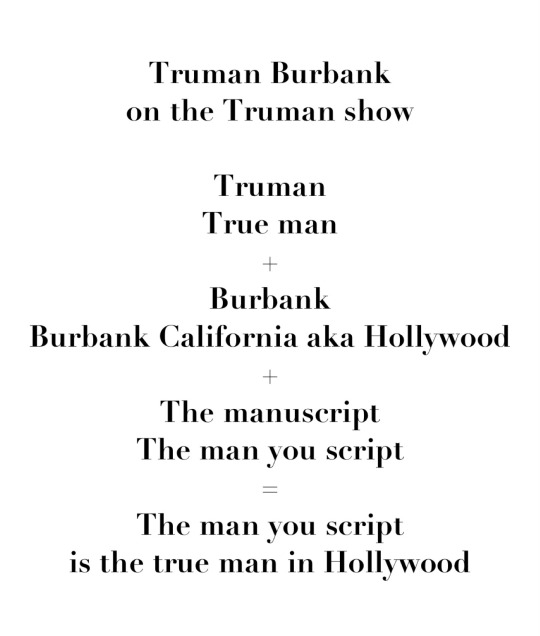
The golden egg is likely a reference to the Aesop fable ‘the goose and the golden egg’. It’s about a countryman who got rich from selling the golden eggs the goose had laid. Over time he became impatient and greedy waiting for the goose to lay one egg a day. He came up with the idea to kill the goose and cut it open. As he did so he discovered that there were no more eggs to be found and that it was the process the goose went through laying one a day that created the golden egg.

Another example of this story is seen in the Willy Wonka stories. In this case it’s used as a test to sift out the bad eggs from the good ones. In the end the moral of the story is “those who have plenty want more and so lose all they have”. This is what lead Truman to reach a breaking point and it’s what we’re seeing play out with Taylor’s story too. “All the pieces of me shattered as the crowd was chanting “more!”” And ‘the goose and the golden egg’ is listed as number 87 in the Perry index of Aesop fables. 🫠

On that note… the only orange colour on the poster is the TnT, a common nickname for Taylor and Travis. What if karma orange is actually a reference to something they were working on together? Stephen Colbert emphasised the music played to transition into the interview as a ‘liaison’, this word is usually used to describe someone acting as a bridge between two people. And Travis is the key to highlighting the contrast between Taylor and Taylor™.

The performance of Taylor™ as the ‘good girl’ and Truman™ as the ‘true man’ is designed to break down the facade so that we can see who they really are underneath. “You never had a camera inside my head”. If we’re not willing to look past the facade of Taylor™ we won’t see what inside her heart.

We’ve all reached the point where we agree that Taylor is queer in some form after viewing her story through a queer lens. I know many are frustrated that the story isn’t over yet, but we have to remember that we’ve already crossed the finish line. Taylor is now repeating the race to help explain her story to a larger audience in a way that they can understand it. All that’s left now is to filter out the good eggs so that we can leave the bad eggs behind.

“When you watch a film or you read a book and there’s a character that you identify with, you most of the time identify with them because they’re targeting something in you that feels like you’ve been there. That’s why we relate to characters.” -Taylor Swift
This applies to swifties too ❤️💛
A tortured poet,
Kylie x
103 notes
·
View notes
Text
How to Become an Occultist:
An easy (?) step-by-step guide.
SO YOU WANT TO BE A WIZARD?
There's no easy step-by-step guide to the occult; someday I'd like to write a course on it for my patreon, or maybe a book. But for now, I'll give the short version:
I’m just going to say upfront, research is the enduring and eternal step. You can’t become an occultist without doing research, and you’re never going to stop doing research. I have a list of pdfs of classic occult texts and grimoires here, and a recommended reading list here.
Step 1: Pick a tradition, practice, or subfield.
The first step is to know what you’re signing up for. Western esotericism is a large field with lots of different subsets. Here’s just a few of them:
Witchcraft: A broad umbrella term that covers everything from historical folk magic, to Wicca and its offshoots, to modern WitchTok folk magic, and beyond. “Witchcraft” has become something of a general term for pop-occultism in recent years, and it’s what people tend to see first. Witchcraft seems more folk-magic-focused than some of the other fields, but that’s not universally true. Modern witchcraft is almost the melting pot of the Western occult tradition, so, if you’re able to find good reading material, it’s a good place to start.
Wicca: Wicca is an neopagan religion founded in 1951 by Gerald Gardner. Wiccans worship a God and a Goddess, practice magic, and call themselves witches. The ritual structure of Wicca is largely inspired by the Hermetic Order of the Golden Dawn (see below), but it also takes inspiration from folk magic, witchlore, early anthropology, and a bunch of other things from the nineteenth and early twentieth centuries. Wicca is probably the best-known occult religion, and it’s mostly responsible for the association between witchcraft and paganism in pop culture.
Ceremonial Magic: Ritual magic or “high magic,” mostly codified in the Renaissance era by grimoires like The Lesser Key of Solomon. This kind of magic is characterized by the evocation and binding (summoning) of spirits — angels, demons, “olympic spirits,” and so forth. One can theoretically command these spirits to do one’s bidding. Modern magicians who work with demons typically fall into two camps: traditional Solomonic magicians who believe that the demons need to be bound and controlled, and demonolators who worship and work with the demons the way witches might work with pagan deities. Also in this subfield is planetary magic, rituals that exploit the powers or influences of the planets by using the tools associated with each one and doing rituals at particular times on particular days, etc. Enochian magic, a system of communicating and working with angels developed by John Dee and Edward Kelley, also falls into this category.
Folk magic: Folk magic or “low magic” is a catch-all term for magic practiced by average people to solve everyday problems. This is your healing magic, love magic, apotropaic (protection) magic, luck charms, spells to find lost objects, curses, etc. etc. Almost every culture has their own local form of folk magic, but there are also some ideas and techniques that are consistent across most of them (e.g. “like attracts like”). There’s also considerable overlap between folk and ceremonial magic; sometimes the only real difference is the social class of the practitioner.
Hermeticism: A system of philosophy based on the Corpus Hermeticum, a set of ancient Greco-Egyptian philosophical dialogues about the nature of the universe. It’s a short but dense text, not the simplest introduction to occult philosophy, but still worth reading because of how influential it was. It’s the loose basis of a nineteeth-century occult society, the Hermetic Order of the Golden Dawn, which is the great-grandfather of most modern occult societies (including Wicca). The HOGD was concerned with a lot more than classic Hermeticism; they also practiced ceremonial magic, astrology, alchemy, and mysticism. Golden Dawn liturgy is so common in modern occultism that you should probably look into it, whether you plan on practicing it or not.
Alchemy: A historical practice that is at once science, philosophy, art, and poetry, alchemy is a thing unto itself. The short version is that alchemy is early chemistry. Alchemists’ attempts at understanding how matter worked was understood to be a philosophical study of the nature of existence, on both a physical and spiritual level. That’s why the goal of alchemy is called the Philosopher’s Stone. The Philosopher’s Stone is allegedly a perfect substance, crystallized divinity, that is able to physically and spiritually perfect anything it comes in contact with. Alchemy is very complicated and hard to understand without diving deep into it, but some alchemical imagery and maxims (“as above, so below”, solve et coagula) have made their way into the general Western esoteric sphere.
Thelema: A religion developed by Aleister Crowley in the early twentieth century. It combines Golden Dawn material with a lot of Crowley’s own personal philosophy and general edginess. Its core tenant is “Do what thou wilt shall be the whole of the law,” which means that one should always follow the guidance of what Thelemites call the “True Will,” the divine intention of one’s Higher Self. Its most important foundational text is a short, cryptic… poem, I guess?… written by Crowley, called The Book of the Law.
Chaos Magic: When Thelema meets postmodernism, you get Chaos Magic. Chaos Magic is more of a philosophical approach to the study of magic than a particular practice. It does away with the pomp and trappings of ceremonial magic and cuts right down to the basics, the magician’s relationship with their subconscious mind. That makes it very straightforward, but also difficult, because you can’t rely on any of those more complex tools. Chaos magicians (or “chaotes”) interpret belief as just another tool, so, they aim to pick up and put down different beliefs and traditions at will, based on whatever suits them in the current moment. The only specific practice associated with chaos magic is sigils, a symbol or other abstract representation of one’s desire that one uses to cast a spell. Chaotes tend to be deliberately haphazard — they have a “fuck the rules, do what you want” kind of attitude.
Satanism: The best-known of the spookier, edgier, “left-hand path” occult traditions. There’s two main varieties of Satanism, atheistic and theistic. The Church of Satan or LaVeyan Satanism (after its founder) is atheistic. It uses Satan kind of like a mascot for their beliefs of self-indulgence and free will. Although they don’t believe in any gods, they do practice magic; it’s mainly Golden Dawn material with an edgy “black mass”-style twist (like invoking demons, using a naked woman as the altar, etc.) The Satanic Temple is also atheistic, and it’s not really an occult society. It’s more a political activist group that fights for religious freedom in the United States. Theistic Satanists believe that Satan is an actual entity, and usually believe that he’s a positive being that represents free will and enlightenment. Some are demonolators, meaning they evoke and work with the demons of traditional ceremonial grimoires as though they’re gods (some believe that they literally are gods). The majority of Satanists are pretty chill. Very few believe that they worship literally evil entities.
That’s just scratching the surface, and keep in mind that this is all in the realm of Western esotericism. It’s a huge field. I recommend having an idea of what you want to study going in, because it’s a lot of material, and it’s easier to find good sources if you know what you want to focus on. Speaking from my own experience, I wish I knew what my options were going in.
Step 2: Learn a divination method.
Every occultist needs some kind of divination method. There are potentially thousands, but I’ll give you some of the big ones:
Cartomancy is card reading. There's lots of different kinds of cards: tarot cards, oracle cards, Lenormand cards, you can even use normal playing cards. It's a super common and super popular method. Tarot is definitely the most popular system. This method is easy to learn and very accessible.
Cleromancy is divination by lot, or casting objects onto the ground — dice, sticks, bones, stones, etc. — and reading the random pattern they make. There's lots of different types. This method is very old and very common. One of the more popular methods nowadays is casting runestones, which use Norse letters.
Scrying is gazing into a blank object until you see visions projected onto/into it. The object can be a crystal ball, a black mirror, a bowl of water, even a dark window or a blank wall (though that's not particularly mystical). Scrying is often used to see spirits in ritual magic. I can't scry worth a damn, so I can't tell you more than that. It's worth trying if you're a visual person, though.
A pendulum is a stone or other heavy object on a chain. You can use it to answer yes/no questions. Lots of crystal shops sell fancy pendulums, but you could just use a pendant. You say to the pendulum, "show me my yes" and "show me my no." Usually the "yes" is going around in a circle and "no" is going back and forth, or vice-versa. Pendulums are fun, but not super reliable because you can influence them easily. I wouldn't interpret any answer a pendulum gives you as final.
Oneiromancy is dream interpretation, and it’s another ancient method that’s used all over the world. I don't have significant dreams very often, though, despite my best efforts. With the abundance of other methods, I don't recommend relying solely on this one.
Automatic writing or “free-association writing” is my personal preferred method. It’s writing a question, and then writing whatever comes to mind as the answer, regardless of whether it makes sense. This technique is very, very effective for me, and has triggered full-on mystical experiences more than once.
Astrology is also a type of divination that involves interpreting the position of the stars and planets on the 2D plane of the sky to learn about the future and/or about specific people. It’s a much more complicated system than horoscope apps make it look. Practically a necessity for planetary magic, but in this century, you can be a wizard without being an astrologer. It’s good to have at least a foundational knowledge of it.
Different methods are useful for different things. Automatic writing and scrying are good for talking to spirits. Astrology is pretty useless for talking to gods, but is a good way of determining the outcome of your spells and the various influences upon your life at a given point. Cartomancy and cleromancy can be used for either, with some benefits and drawbacks. I recommend playing around with different methods to find one that works for you.
Step 3: Develop basic magical skills.
In addition to divination, you’re going to need some other basic skills. The most important one is meditation — if you don’t know how to meditate, learn. Meditation doesn’t have to mean sitting still. I definitely can’t sit still; I meditate by pacing back and forth. Anything you can do to lull yourself into a trance state can work, even singing in the shower.
You’ll also have to practice visualization, imagining your magic as though it were something tangible. For example, a lot of ritual formats will begin by asking you to imagine a white circle of light around yourself, or imagining taking each of the four elements into your body. Next is energy work — manipulating these imaginary forces and seeing how they affect your body, your emotions, other people, and the external environment.
You’ll also have to learn the basics of how to conduct a ritual, and gather your basic tools (which don’t have to be fancy or expensive). Rituals can feel awkward and silly at first, but that changes with practice. The basic point of a ritual (“supernatural” stuff aside) is to create the conditions to put yourself in a particular state of mind.
Finally, magic requires a lot of introspection and self-awareness. You have to really know what you want, not just what you think you want. And when your magic is successful, you have to have the humility to not have it go to your head (or else you’ll be afflicted with the dreaded “Magus-itis”). And that’s without going into the fact that ritual can drag up some intense stuff. Work through your shit, do your Shadow work. It’s hard, but it pays off in the long run.
Step 4: Practice a simple ritual.
Once you have some basic skills, it’s time to try your first ritual! You’re not going to want to try anything that’s labor-intensive or life-changing. Save the demon-summoning and stuff until later. The first ritual you do will probably be a banishing — a simple spell that’s intended to clear the space of any spiritual crap. Ideally, it should be used before and after every rite. Even if you don’t believe in evil spirits or “negative energy” or anything like that, a banishing is like the magical equivalent of turning it off and back on again. It’s a systems reboot. It wipes the slate clean. You’re gonna want to know how to do that, so you can 1. know what a space feels like when it’s free of influences, and 2. put down whatever you call up. It’s a good first thing to learn because it’s so essential, and also because it’s almost guaranteed to have no major repercussions.
The standard banishing ritual in the Western esoteric tradition is the Lesser Banishing Ritual of the Pentagram (LBRP), which is from the Golden Dawn tradition. It consists of intoning or “vibrating” the names of God and invoking the angels of the four directions. If that’s too Abrahamic for you, there are plenty of other variants that use different divine names. The Wiccan “circle casting” is essentially the same thing, trimmed down a bit. If the LBRP doesn’t appeal to you, there’s plenty of other banishing rites out there.
The first full ritual I did was actually a simple variant of the Wiccan “Drawing Down the Moon” invocation. I remember really feeling something the first time I did it, and that was enough to convince me that I wanted to continue.
And there you have it, a step-by-step guide to becoming an occultist, as simple as I can make it. Keep it simple to start, take your time, do your research. Whether you want anything specific out of occultism, you want to satisfy your curiosity, or you just like the idea of being a wizard, it’s fun to study magic.
#occultism#occult#witchblr#magic#magick#esotericism#witchcraft 101#occult 101#occult basics#long post
52 notes
·
View notes